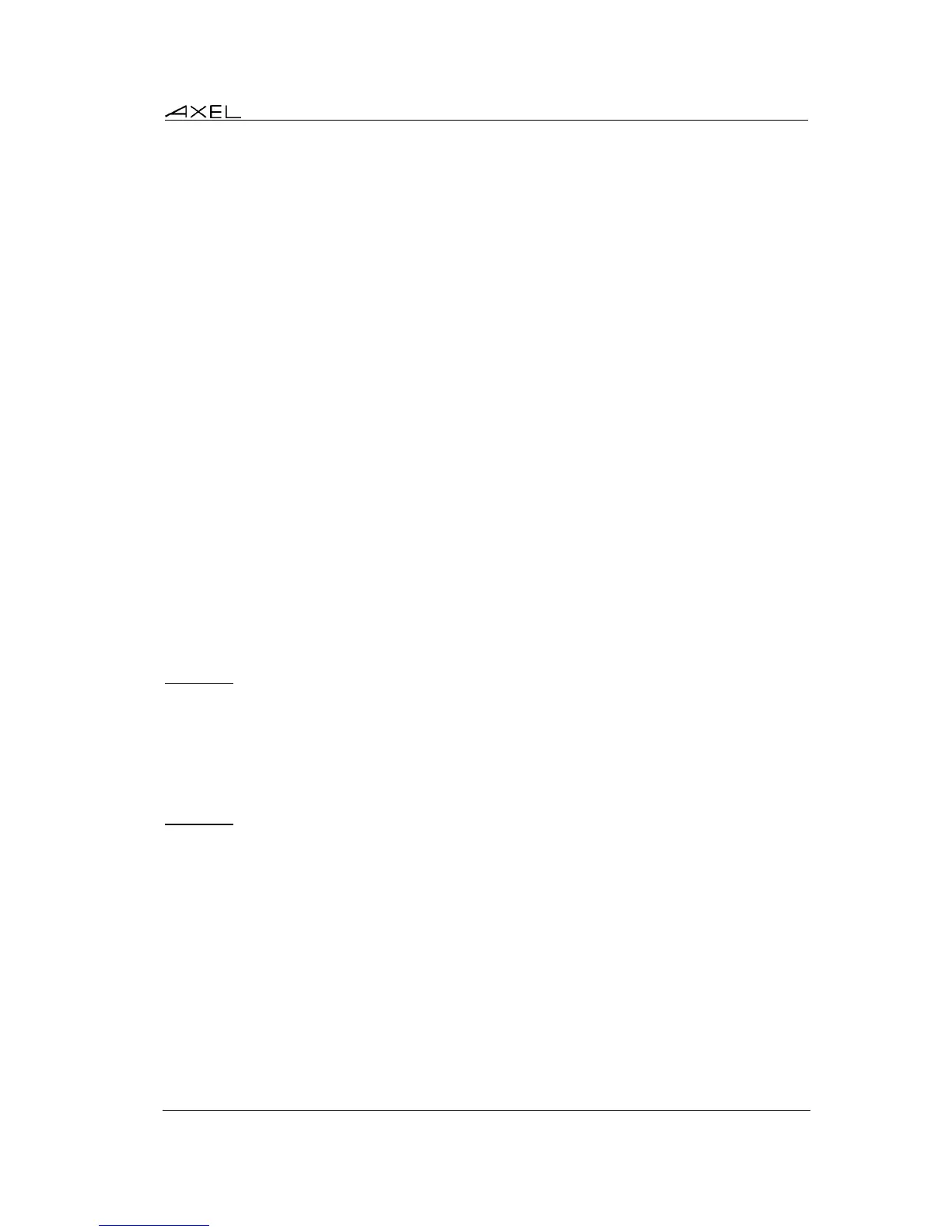Installing under OS/400
AX3000 Models 80 and 85 - User's Manual 129
For a screen session, enable the transparent mode by sending the transparent sequence
(@%@) followed by the port number:
0: default port.
1 to 3: native auxiliary ports (Aux1, Aux2 and parallel)
4 to 5: network printer (Net1 and Net2).
6 to 9: USB logical ports (Usb1, Usb2, Usb3 and Usb4).
10 to 11: network printer (Net3 and Net3).
For a printer session, send only the transparent sequence to enable the transparent mode.
In both case, the transparent mode is disabled when the transparent sequence is sent a
second time.
The character remapping is based on PC850 ASCII table (as with the ASCII to EBCDIC
function).
c) Character or Hexadecimal Mode
The two transparent modes are:
- Character Mode: the dataflow can contain both ASCII characters and hexadecimal ASCII
code. The hexadecimal code must began by a / and the ASCII code is encoded by two digit
(between 0 and F).
Example: Esc AB <RC> is \1BAB\0D
- Hexadecimal Mode: the dataflow contains only hexadecimal codes (encoded by two digits).
Example: Esc AB <RC> is 1B41420D
d) Examples
With the following examples the start and stop sequence is @%@
Example 1: Screen session, character mode
When this EBCDIC data is received:
@%@1/1Bat/2F@%@ (44 6C 44 F1 61 F1 C2 81 A3 61 F2 C6 44 6C 44)
This ASCII data is sent to the AUX1 port:
<ESC>at/ (1B 61 74 2F)
Example 2: Printer Session, character mode
When this EBCDIC data is received:
@%@/1Bat/2F@%@ (44 6C 44 F1 61 F1 C2 81 A3 61 F2 C6 44 6C 44)
This ASCII data is sent to the auxiliary port of this printer session:
<ESC>at/ (1B 61 74 2F)
e) Handling DTR and RTS Signals
The transparent mode can also be used to control, from a screen session, DTR and RTS output
signals.
The command syntax is the following:
@DTR Port Action
@RTS Port Action
